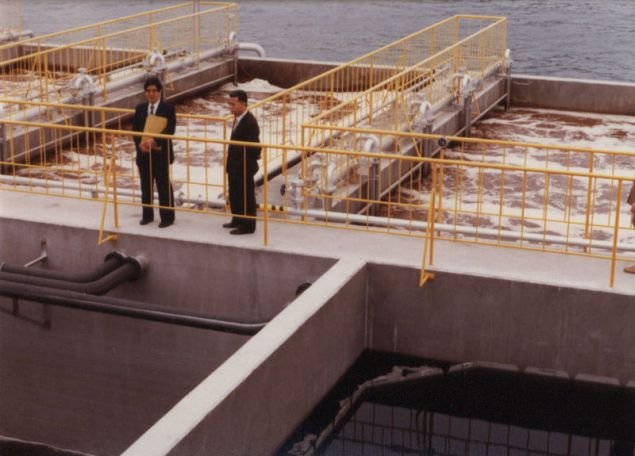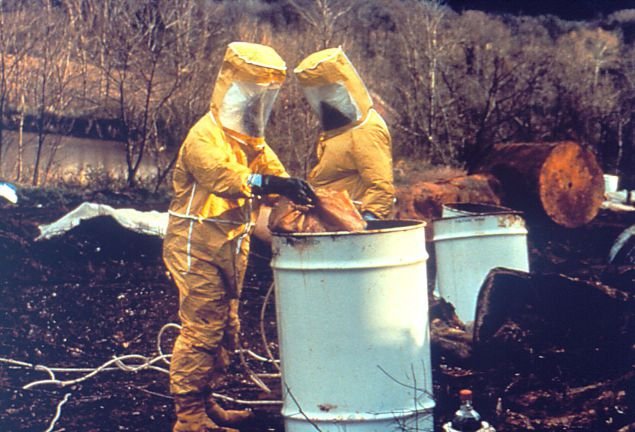Anthropocene Adjustments
The labeling of the “Anthropocene” as a geological epoch—or possibly an extinction event—refers to the current era in which human-made processes have changed planetary cycles for climate, ocean currents, and mineral circulation, among others. For many researchers, it is an effort to acknowledge the link between global capitalism, colonialism, and the various structural injustices that have proliferated in the twenty-first century, such as global climate change, mass poverty, social inequity, and so on.
As a term, the Anthropocene has become such a hallmark descriptor that on April 14 this year, the second Anthropocene Campus “The Technosphere Issue” was held. The campus is a ten-day intensive series of plenaries, seminars, and workshops put on by the Haus der Kulturen der Welt and the Max Planck Institute for the History of Science. The campus brought together over 300 academics, artists, and activists from across the globe (albeit predominantly North America and Europe). As two participants of the Anthropocene Campus, we write this post to share some lingering thoughts on this theme, including what we think critical discard studies (CDS) might contribute to the technosphere discussion. So we know what the Anthropocene refers to, but what is the technosphere? The term was coined by Earth Systems scientist Peter K. Haff to describe an “emerging global paradigm”—a new layer on the planet made up of “the interlinked set of communication, transportation, bureaucratic and other systems that act to metabolize fossil fuels and other energy resources.”1 Unlike the biosphere, atmosphere, and lithosphere, Haff argues that the technosphere has an “autonomy” in which an all-encompassing global society has become so dependent upon technology that people must service its parts continually in order to survive. Haff’s technosphere naturalizes labor and its products as a metabolic process, which posits that the technosphere could be construed as another kind of apolitical ecology.2 We suggest that CDS offers a unique profile for repoliticizing the Anthropocene due to its ability to recognize forms of violence the concept of the technosphere hides, namely that of its implicit relationship with wasting and trashmaking. Here, we offer six insights from CDS that might assist in studying and critiquing the technosphere, and the Anthropocene more broadly.
Workers at a wastewater treatment facility Photo by Fanghong on May 12, 2005 from Wikimedia Commons.
1. Waste is a part of the system, and CDS critiques the system
“A few individuals may occasionally withdraw from the technosphere voluntarily to become hermits, or fail to work in its support because of mental or physical incapacity […] From the point of view of the technosphere the latter are broken parts, and are in effect discarded from the system unless they can be repaired, i.e. made serviceable again.”3
Autonomous or not, the technosphere produces waste. We readily see this in exhaust from factories, fertilizer runoff, and radiation from nuclear waste. A technosphere must expel harmful matter from its structure and processes in order to maintain its functionality. Crucially, the technosphere is predicated upon an understanding that the problem with certain wastes (including people) is not necessarily the system itself, but that people—for reasons outside of the technosphere’s function or responsibility—are made external to capitalist modes of production. If we draw on Mary Douglas’s notion of waste as “matter out of place,” we see that systems create waste by defining certain people and things as expendable.4 Whereas CDS would point to the properties of the system—and the harm this system produces—as the cause of social and environmental issues, the authors of the technosphere presume harm is caused by failure to reincorporate people and objects within the system. That is, the concept of the technosphere misses the system that makes these external, while CDS is about looking at those systems critically. Accordingly, the Anthropocene appears amenable to technological fixes and economic tweaks while the system—including how objects and people come to be defined as “external”—is left unchallenged.
2. Discards rarely “go away”
Second, and relatedly, a technosphere includes more than just the functioning systems that constitute it. It is also made up of its discards and not just its useful and productive parts. Here again we depart from Haff in recognizing that technologies, once deemed no longer usable, are not actually “discarded from the system.”5 For example, in 2012, the USA produced 3.4 million tons of e-waste. Although these wastes are no longer plugged into the electrical grid, this does not mean that they are inert; instead, they affect people by embodying the energy and labor it took to produce them.6 Objects are not just acted upon; they also act on people as they continue to use up energy or spur its making.7 As agents in e-waste sites such as Agbogbloshie, discards exert influence on those who dismantle them as part of their livelihoods, are incorporated into military regimes, and even become part of the ways in which the West comes to tell stories about particular people, places, and itself. As CDS shows us, waste doesn’t go away. It stays in the technosphere, and it does things. The Anthropocene requires us to think critically not just about those parts that appear active and useful, that consume energy or transform it, that are part of production cycles and economic infrastructures, but also those parts that are hidden from view—those parts of the technosphere that might appear (to certain people living in certain places) to have become obsolete.
Workers handle hazardous waste Photo archived at the Public Health Image Library managed by the Center for Disease and Control. No date. From Wikimedia Commons.
3. Technology is not a closed loop
“Over a long enough period of time, mass flow loops may close. Whether the rapid pace of technological change will generate effective recycling mechanisms for the resulting waste stream soon enough to limit having a large impact on the climate, and hence a braking effect on technology, is unknown.”8
As it stands, the technosphere produces waste streams that it and other “spheres” (biosphere, hydrosphere, lithosphere) cannot recycle. The possibility of mass recycling noted in the quote above rests on the assumption that the Earth and what humans have built from the Earth are closed-loop systems or that they may eventually “evolve” to become one. To us, this sidesteps the numerous ethical and moral breaches—not to mention the ecological changes wrought—that waste produces or enacts throughout its shelf life. The implication of this claim (that greater recycling might solve waste issues) is that current technologies and programs are the major barrier to solving problems of the Anthropocene, rather than morals or ethics. Yet, recycling of technology is not a streamlined process and is rarely effective from a biophysical perspective. Recycling produces its own wastes, is inefficient, and many materials are too toxic or heterogeneous, or there is too much of them to be folded back into systems.9 Furthermore, Gregson et al. point out that recyclables can be politically or morally disqualified from being recovered.10 CDS addresses these facts by highlighting the ways in which recycling is a highly material and political process (subject to downcycling) and rooted in production cycles that privilege profit over durability among other concerns. Since the technosphere relies primarily upon capitalist production, it too is subject to James O’Connor’s second contradiction of capitalism11—that in order to survive it must erode the resources (nature and labor) that keep it alive. There is no clear indicator that the technosphere is self-perpetuating or that its loop could ever close.
4.Different types of waste act differently
While Mary Douglas’s definition of waste allows us to conceptualize waste as all things “external” to (though, crucially, a necessary part of) a system, more recent CDS scholarship has focused on the physical properties and characteristics of waste materials. This includes where waste goes, how it acts, what bodies it enters, and how long it takes for certain materials to “go away.” CDS attends to the ways in which different types of waste materials act differently: an abandoned animal carcass (which may or may not be considered waste) acts differently from marine plastics, which act differently from nuclear waste. Moreover, the solutions presented for dealing with waste also have different physical properties. Think of, for example, arsenic trioxide waste in Canada’s Northwest Territories, which must be kept frozen in perpetuity to keep it from causing harm. By focusing solely on the fact that the technosphere produces (unspecified) types of waste and that this waste must be “recycled” obscures the fact that certain types of waste shouldn’t be produced to begin with. Additionally, it reinforces the idea that new or different kinds of production are the solution to waste issues rather than their cause.
5. Capital (and waste) is unevenly distributed and experienced
“For its human parts the technosphere provides essential support in many different ways, for example by supplying food and fresh water to population centers, medicines to keep us healthy […] The type and rate of provision are responsive to human needs and desires.”12 Another issue with the technosphere is that it frames the Anthropocene largely from an affluent global north perspective, negating how the Anthropocene is understood in the context of capitalist and colonial power relations. Haff describes the technosphere as the “modern governmental and other bureaucracies, high-intensity industrial and manufacturing operations […] without which modern civilization and its present 7 × 109 human constituents could not exist.”13 Not only does his description of the technosphere—and the supposed universal human reliance on it—erase the many diverse economies that do exist, but it suggests that current bureaucratic and economic practices actually do meet the needs of 7 billion people—something that, as recent Black Lives Matter and Idle No More protests have shown, is anything but true. Furthermore, as environmental justice literature has repeatedly shown, waste and contamination are unevenly distributed and experienced by marginalized groups, including indigenous people and people of color. Recent CDS scholarship has gone further to suggest that processes of racialization and wasting are themselves processes that rely on one another.14 When Peter Haff writes that “strategies to limit environmental damage that consider only the needs of people are likely to fail without parallel consideration of the requirements of technology,”15 we need to be clear about what specific people Haff is referring to. For many, a well-functioning status quo system means continued economic disparity and waste.
John M. Grunsfeld helps to repair and replace the power control unit on the Hubble Telescope on NASA’s third service mission. The last and final service mission was in 2009 Photo taken on March 2, 2002. From Wikimedia Commons
6. Technology requires maintenance and repair
“We adopt the non-anthropocentric view that technology is a global phenomenon that follows its own dynamics, representing something truly new in the world—the opening phase of a new paradigm of Earth history. In this sense one might say that technology is the next biology.”16
Lastly, a central tenet of the “technosphere” is that technology has become “autonomous,”17 enlisting humans to “design, manufacture, construct, deploy and maintain key elements [of itself].”18 Haff concludes from this that “most of [the technosphere’s] function occurs without human intervention or even knowledge.”19 A burgeoning body of CDS and Science and Technology Studies (STS) literature, however, considers infrastructure and technology in the context of maintenance and repair—what is necessary for systems such as the technosphere to function. While Haff admits that humans are a necessary component of the technosphere—likening human repair and maintenance work to water molecules in the hydrogen cycle—his depiction of technology is all-consuming, with humans (including states and corporations) having little decision-making capacity to influence how technology is produced or modified. By contrast, CDS and STS literature highlights ways in which maintenance and repair work is—in the context of historical politics and power relations—contingent on individual agency and decision-making practices, including personal ethics, care, and situated knowledge.20 By dehumanizing and naturalizing how materials are produced, maintained, and discarded, Haff’s technosphere obfuscates the possibility that human systems might be (or already are) managed differently—perhaps more ethically or justly.
Conclusion
Overall, the technosphere distances us from situated violence against humans, animals, and resources enacted by the process that has created the technosphere in the first place—namely processes of industrialization and commodification spurred on by seemingly endless production for profit. If the technosphere is a condition of the Anthropocene, scholars ought to acknowledge the dangers of making technology seem “natural” and the violence that has gone into making the technosphere, as well as how a technosphere enacts violence against society and its more-than-human parts. Discard studies may be one way forward to ensure that Anthropocene scholarship adequately addresses these issues.
This post was developed through various conversations, coursework, and readings at the Anthropocene Campus hosted by the HKW and the Max Planck Institute for the History of Science. We are thankful for the thoughtful insight of conveners and participants, but particularly to Paul Edwards and Gabrielle Hecht and their lively “Kitchen Debate” that helped us think through various moral and ethical implications of the technosphere. Thanks to Max Liboiron for feedback on a previous draft and Arn Keeling for suggesting maintenance and repair.



